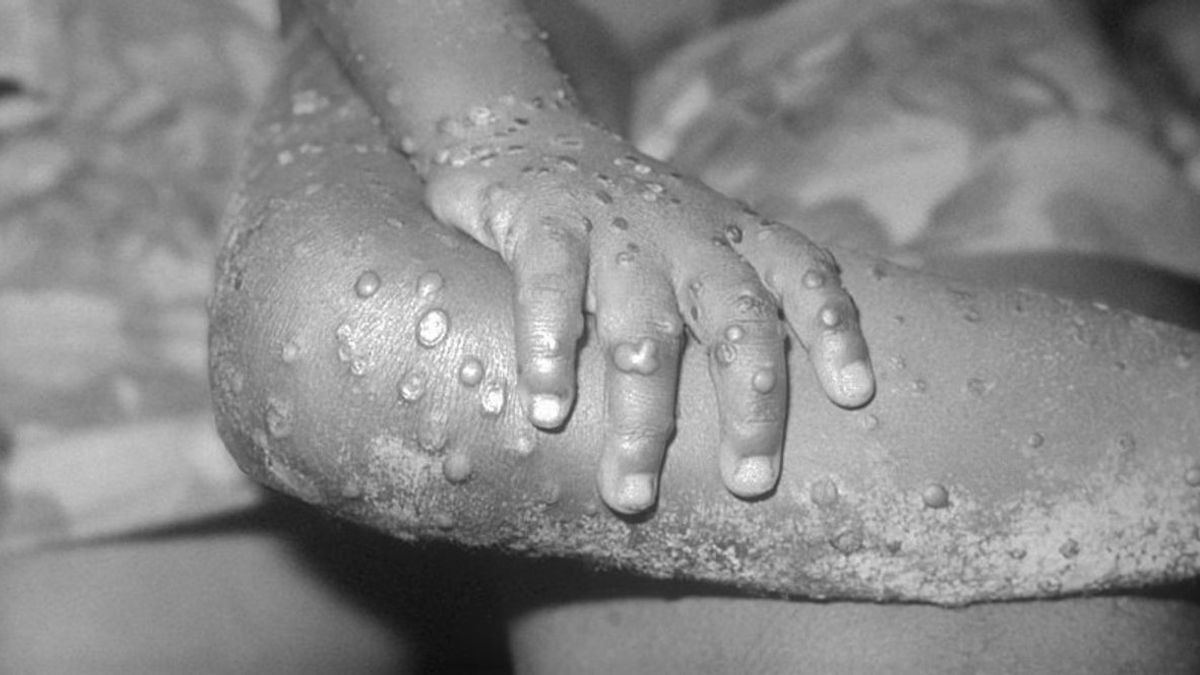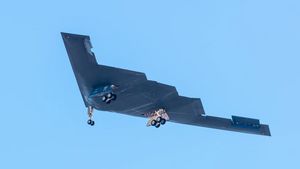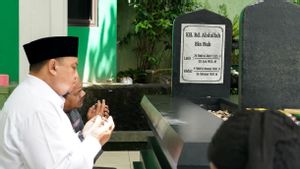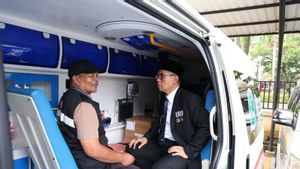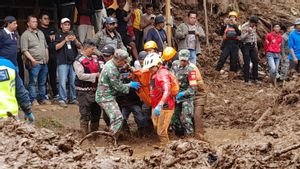JAKARTA - The Indonesian Doctors Association (IDI) asks all doctors to be aware of the symptoms of monkeypox or monkeypox in patients regarding case situations that have the potential to become epidemic in the world.
"Monkey smallpox is a zoonotic disease whose main transmission is through human contact with blood, body fluids, or lesions on the mucosa or skin of infected animals," said Adityo Susilo from the Association of Indonesian Internal Medicine Specialists (PAPDI) in Jakarta, quoted from Antara, Wednesday, July 27.
The World Health Organization (WHO) has declared an emergency status for monkeypox cases. Although it has not been detected in Indonesia, monkeypox cases have been found in Singapore.
Monkeypox is a viral, zoonotic disease that is rare. Several cases of human infection have been reported sporadically in Central and West Africa, generally in locations close to tropical rainforest areas.
"This monkeypox belongs to the orthopoxvirus genus, such as the variola virus that causes smallpox (Smallpox) and has been declared eradicated worldwide by WHO in 1980," he said.
Based on WHO data, monkeypox was initially identified in 1970 in Zaire and has since been reported sporadically in ten countries in Central and West Africa. In 2017, Nigeria experienced the most extraordinary event ever reported, with an estimated number of confirmed cases at around 40.
Since May 2022, after being reported from non-endemic countries, monkeypox has become a disease of global public health concern.
WHO then received reports of monkeypox cases originating from non-endemic countries since May 13, 2022. Currently the cases have expanded globally to a total of 75 countries.
As of July 25, 2022, there were 18.905 confirmed cases of monkeypox worldwide, with 17,852 cases occurring in countries with no previous confirmed case history.

The United States reported 3.846 cases of monkeypox. In ASEAN, Singapore has reported nine confirmed cases and Thailand has reported one confirmed case.
In Africa, cases of monkeypox infection in humans have been reported, associated with a history of contact with infected animals, such as monkeys, squirrels, rats and other rodents. Eating the meat of infected animals that are not properly cooked is also said to be another method of transmission.
"As for human-to-human transmission, it is suspected that it can occur as a result of close contact with infected patients directly through exposure to infected respiratory secretions, direct contact with patient skin lesions, or contact with objects that have been contaminated by the patient's body fluids," he said.
In addition, said Adityo, vertical transmission from mother to fetus through the placenta (congenital monkeypox infection) is also possible.
The incubation period for monkeypox ranges from 5-21 days with an average of 6-16 days. After passing through the incubation phase, the patient will experience clinical symptoms of high fever with severe headache, lymphadenopathy, back pain, muscle aches and prominent weakness.
Within 1-3 days after the fever appears, the patient will find patches on the skin, starting from the face and spreading throughout the body.
These patches will mainly be found on the face, palms of the hands and soles of the feet. Over time, the patches will turn into maculopapular skin lesions, vesicles and pustules which in ten days will turn into scabs.
Adityo, who is also the Central Executive of the Indonesian Association of Tropical Medicine and Infectious Diseases, said that until now there is still no specific treatment for monkeypox infection.
However, vaccination against smallpox caused by Variola virus infection in 1980 could provide 85 percent effective protection against monkeypox infection.
Adityo again reminded that with the discovery of monkeypox cases in Singapore, the public also needs to be aware of the possibility of the virus entering Indonesia.
This is important, he said, especially in populations at risk of monkeypox fatality such as children, pregnant women, the elderly, and people with low immunity (immunosuppression).
"Reflecting on the COVID-19 pandemic that has hit, we must always be optimistic that by working together the world will be able to move quickly to respond to this situation," he said.
VOIR éGALEMENT:
Head of the Grand Committee (PB) IDI Communicable Disease Control Study Division Agus Dwi Susanto added that a good understanding of monkeypox infection and early awareness of extraordinary events are the main capital in the prevention aspect.
Adityo said efforts to avoid contact with patients suspected of being infected are the most effective keys to prevention, accompanied by surveillance and early detection of active cases through quarantine to prevent wider spread.
Agus also asked health workers, both doctors and nurses who found symptoms of monkeypox in patients to immediately follow up with the Polymerase Chain Reaction (PCR) test.
The monkeypox virus examination method is by detecting the DNA of the virus, reporting it to the Local Health Service so that surveillance and other further actions can be carried out immediately.
The English, Chinese, Japanese, Arabic, and French versions are automatically generated by the AI. So there may still be inaccuracies in translating, please always see Indonesian as our main language. (system supported by DigitalSiber.id)
